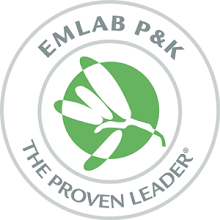Moisture meters have been used by many different types of home and building professionals for a number of years. While the technology of moisture meters has changed significantly over the past few years, the reason for using them has not.
Why Use a Moisture Meter?
Moisture is a highly important factor which affects the integrity of homes and buildings and using a moisture meter can allow an inspector to locate the moisture source and determine the amount of moisture present. Some of the surfaces that can be measured with a moisture meter include wood, drywall, plaster, block, brick, siding and roofing materials. Having an increased amount of moisture in these materials can possibly lead to safety issues such as decay, mold and a decrease of structural integrity.
Moisture meters can also be used to see if building materials are dry enough to be utilized in construction. During construction even concrete slabs are measured for moisture content by testing relative humidity before the flooring is laid down.
Different Types of Moisture Meters
There are two different types of moisture meters that a professional can choose from and the selection between the two depends on the material being tested and the parameters of the inspection.
The Pin Type (invasive) moisture meter uses electrical conductance principles to measure the moisture level of the material between two electrodes. One advantage of pin type meters is the ability to penetrate deep into the material of the surface you are testing, resulting in a more accurate reading. This can all depend on the type of materials being tested as well. One downfall of pin type moister meter is it can leave small holes in some materials such as wood, drywall and plaster.
The Pin-Less Type (non-invasive) moisture meters use a radio frequency transceiver to give relative readings within the material. This moisture meter works much like a stud finder and although it is less invasive than its counterpart, some pin-less type moisture meters can give false positive readings. The false positive readings are due to the presence and reflective properties of steel studs behind a wall cavity, as well as false readings of moisture below the surface of the material if surface moisture is present.
There are some moisture meters that offer both Pin and Pin-Less measurement modes. These units can switch between the different modes and can add both flexibility and accuracy during an inspection. Choosing the correct meter may require some research since there are advantages and disadvantages of each type of moisture meter with a wide variety of prices. EMLabPK.com has a full selection of moisture meters including useful information such as users’ manuals, high resolution images, specifications and videos.
For any additional questions about moisture meters or other indoor air quality testing products or supplies please feel free to contact EMLab P&K Products at 888.836.5227 or email at products@emlabpk.com.
Tuesday, October 5, 2010
Subscribe to:
Posts (Atom)
